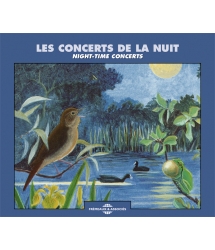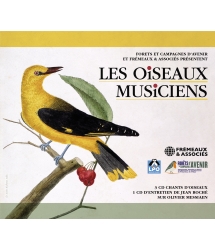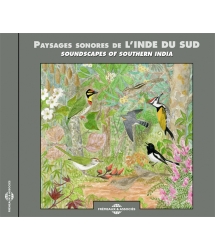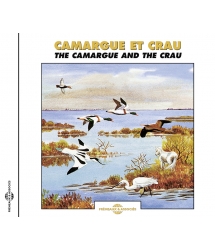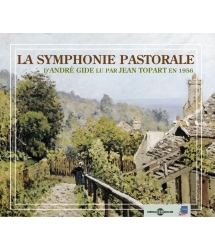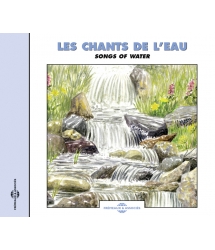- Our Catalog
- Philosophy
- Philosophers of the 20th century and today
- History of Philosophy (PUF)
- Counter-History and Brief Encyclopedia by Michel Onfray
- The philosophical work explained by Luc Ferry
- Ancient thought
- Thinkers of yesterday as seen by the philosophers of today
- Historical philosophical texts interpreted by great actors
- History
- Books (in French)
- Social science
- Historical words
- Audiobooks & Literature
- Our Catalog
- Jazz
- Blues
- Rock - Country - Cajun
- French song
- World music
- Africa
- France
- Québec / Canada
- Hawaï
- West Indies
- Caribbean
- Cuba & Afro-cubain
- Mexico
- South America
- Tango
- Brazil
- Tzigane / Gypsy
- Fado / Portugal
- Flamenco / Spain
- Yiddish / Israel
- China
- Tibet / Nepal
- Asia
- Indian Ocean / Madagascar
- Japan
- Indonesia
- Oceania
- India
- Bangladesh
- USSR / Communist songs
- World music / Miscellaneous
- Classical music
- Composers - Movie Soundtracks
- Sounds of nature
- Our Catalog
- Youth
- Philosophy
- News
- How to order ?
- Receive the catalog
- Manifesto
- Dictionnary











- Our Catalog
- Philosophy
- Philosophers of the 20th century and today
- History of Philosophy (PUF)
- Counter-History and Brief Encyclopedia by Michel Onfray
- The philosophical work explained by Luc Ferry
- Ancient thought
- Thinkers of yesterday as seen by the philosophers of today
- Historical philosophical texts interpreted by great actors
- History
- Books (in French)
- Social science
- Historical words
- Audiobooks & Literature
- Our Catalog
- Jazz
- Blues
- Rock - Country - Cajun
- French song
- World music
- Africa
- France
- Québec / Canada
- Hawaï
- West Indies
- Caribbean
- Cuba & Afro-cubain
- Mexico
- South America
- Tango
- Brazil
- Tzigane / Gypsy
- Fado / Portugal
- Flamenco / Spain
- Yiddish / Israel
- China
- Tibet / Nepal
- Asia
- Indian Ocean / Madagascar
- Japan
- Indonesia
- Oceania
- India
- Bangladesh
- USSR / Communist songs
- World music / Miscellaneous
- Classical music
- Composers - Movie Soundtracks
- Sounds of nature
- Our Catalog
- Youth
- Philosophy
- News
- How to order ?
- Receive the catalog
- Manifesto
- Dictionnary
PASTORAL BELLS
FREMEAUX & ASSOCIES
Ref.: FA692
Author : 23|130
Artistic Direction : JEAN-LUC HERELLE
Label : Frémeaux & Associés
Total duration of the pack : 53 minutes
Nbre. CD : 1
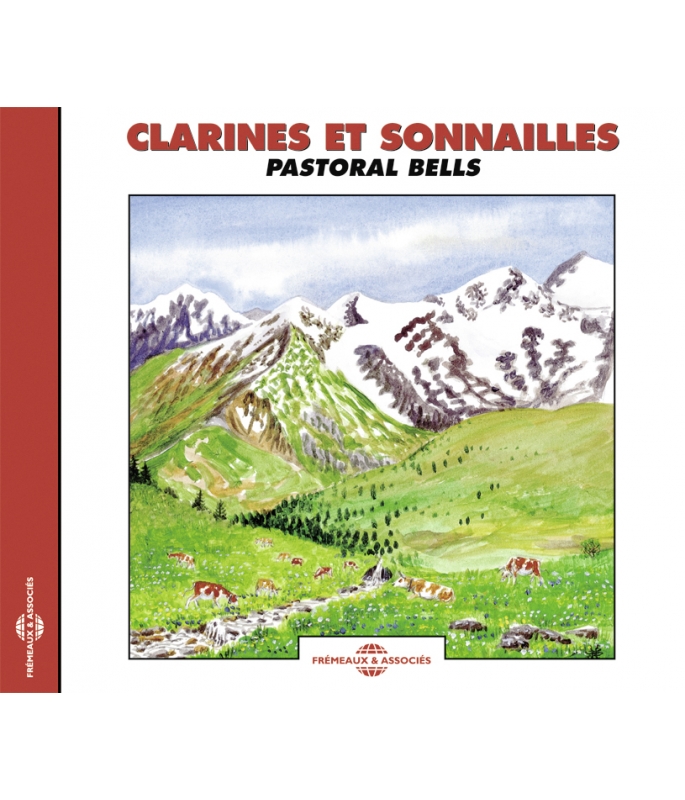
PASTORAL BELLS
PASTORAL BELLS
This CD brings the listener the sounds of bells worn by hears of cows in mountainous districts and goats and sheep from the Mediterranean area. Different recordings follow on from one another to form one “pastoral symphony”, and, thanks to the index, the listener may choose any particular passage. Numerical recordings, these sounds are now disappearing; they form a relaxing metallic music, evoking the harmony that still exists between man and nature in remaining pastoral areas. Patrick Frémeaux
Stéreo and digital recording of the natural landscape sound. Since 1995, Frémeaux & Associés is the publisher of sound heritages and traditional music for relaxing and scientific listening: natural sound sceneries of endangered ecosystems in the world, wilderness atmospheres, bird songs and voices of the wildlife.
-
PisteTitleMain artistAutorDurationRegistered in
-
1Clarines d'un troupeau de vaches00:03:581995
-
2Sonailles méditerranéennes00:03:011995
-
3Quelques clarines près d'un ruisseau00:06:451995
-
4Sonailles d'un troupeau de chèvres00:02:311995
-
5Deux troupeaux de vaches00:10:091995
-
6Clarines d'un troupeau de mouton00:05:191995
-
7Un troupeau de vaches00:02:241995
-
8Les clarines en acier d'un autre troupeau00:02:151995
-
9Clochettes d'un troupeau de mouton00:03:591995
-
10Un troupeau de vaches proche et un autre au loin00:07:561995
-
11Carillon d'une Abbaye dans une vallée isolée00:05:021995
CLARINES ET SONNAILLES
CLARINES ET SONNAILLES
PASTORAL BELLS
Descriptif des 11 index
01. Clarines d’un troupeau de vaches au lever du jour dans une prairie alpine. L’alouette lulu chante en vol au-dessus de la prairie (J.-L. Hérelle).
02. Sonnailles méditerranéennes avec un chant de fauvette mélanocéphale (J.-C. Roché).
03. Quelques clarines près d’un ruisseau accompagnées du chant de la fauvette des jardins (J.-L. Hérelle).
04. Sonnailles d’un troupeau de chèvres en pays méditerranéen.
05. Deux troupeaux de vaches se mélangent, l’orage menace, les animaux sont excités (J.-L. Hérelle).
06. Fin de l’orage et clarines denses d’un troupeau de moutons.
07. Ici, un troupeau de vaches fait résonner ses clarines en bronze, qui donnent un son très clair, un peu acidulé (J.-L. Hérelle).
08. Les clarines en acier d’un autre troupeau donnent des sons plus mats et graves (J.-L. Hérelle).
09. En pays méditerranéen, clochettes d’un troupeau de moutons près d’un abreuvoir.
10. Un troupeau de vaches proche et un autre au loin. Un rougequeue noir chante perché sur le toit de la bergerie (J.-L. Hérelle).
11. Carillon d’une abbaye dans une vallée isolée, accompagné par le merle noir, le pinson des arbres, la corneille noire, les pics épeiche et vert, la mésange charbonnière et le pigeon ramier (J.-L. Hérelle).
Introduction
Jean-Luc Hérelle a réalisé en montagne la série d’enregistrements de clarines, qui constitue la matière sonore principale de ce CD. Jean-Claude Roché lui a proposé d’ajouter quelques sonnailles de troupeaux de chèvres et de moutons de pays méditerranéens. Les chants d’oiseaux et un orage fort ont été enregistrés en même temps que les clarines, et Jean-Luc Hérelle a terminé cette symphonie pastorale par le carillon d’une abbaye située dans une vallée isolée, sur fond de concert d’oiseaux. Il a réalisé également le master numérique en “direct to disc”.
L’accréditif des enregistrements est donné dans la liste des index.
Patrick Frémeaux
CLARINES ET SONNAILLES
Jean-Luc Hérelle “raconte” ici une journée dans un paysage de montagne où existent encore des activités pastorales. Cette évocation est proche des ambiances sonores rassemblées.
• Le jour se lève. Déjà, haut dans le ciel, l’alouette lulu monte en chantant vers le soleil. Au loin, sur le plateau, face à l’aurore, dans un repli de la prairie alpine, je devine un troupeau de vaches. Ça et là, des écharpes de brume finissent de se dissiper. Une à une, les bêtes se lèvent et commencent à brouter. Alors les premières notes, telles un tapis sonore ondoyant, se propagent dans toute la montagne. Maintenant, des centaines de clarines teintent autour de moi. Un troupeau qui ruminait, abrité derrière une barre rocheuse, se dirige vers le ruisseau tout proche.
• Une corneille noire lance son cri guttural et vient inspecter les alentours. Plusieurs vaches boivent l’eau fraiche et limpide du ruisseau qui se faufile en murmurant parmi les grandes gentianes jaunes, les campanules barbues aux clochettes bleu pâle, les grassettes installées sur leur coussin de mousse, les alchémilles couvertes de perles de rosée et tout un firmament rouge et or d’œillets, de pensées, de saxifrages, de pulsatiles… Un peu plus bas, de la grosse touffe de saules qui enjambe le ruisseau, me parvient le chant mélodieux de la fauvette des jardins. Je savoure ce paysage, cette musique du hasard au rythme aléatoire, cette harmonie parfaite pour l’œil et l’oreille. Il n’y a pas si longtemps, dans toutes les campagnes, on devait entendre de telles sonorités pastorales qui rythmaient la vie des hommes au fil des saisons.
• C’est l’heure de la traite, un chien décrit de grands arcs de cercle en courant et en jappant autour des bêtes, provoquant par vagues successives l’accélération du carillonnement. A l’origine, les sonnailles attachées par les bergers au cou des animaux servaient à les surveiller ou à les retrouver dans la nature. De nos jours, cette pratique se perpétue dans quelques régions de montagne, probablement plus par tradition que par nécessité.
• Il est maintenant tard dans l’après-midi. Sur les crêtes, de gros nuages gris menacent, l’orage ne saurait tarder. Il faut songer à redescendre. Les animaux sont excités et beuglent. Deux troupeaux se sont mélangés : l’un a des clarines en bronze, au son aigu, très clair, un peu acidulé, l’autre a des clarines en tôle d’acier, qui donnent un son plus mat et grave. Je dévale le sentier de plus en plus abrupte, traverse une moraine parsemée de blocs chaotiques et débouche dans une petite vallée où un troupeau a été amené. Je m’approche d’une vieille bergerie dont le toit de lauses est à demi effondré. Devant l’entrée dont la porte a disparu, une fontaine-abreuvoir distille un mince filet d’eau dans l’auge de pierre cernée d’oseilles et d’orties. Le grondement de l’orage se rapproche. Aux premières gouttes de pluie, je vais m’abriter sous ce qu’il reste du toit. Devant moi, une partie du troupeau s’est agglutinée dans une sorte de corral.
• A l’abri dans la bergerie, je me mets à rêver, et ce rêve m’emmène en Méditerranée dans les garrigues, où les troupeaux de moutons dévalent les pentes en faisant sonner leurs clarines parmi les cistes et les myrtes aux parfums enivrants. J’entends aussi le concert des cigales, des grillons, des locustes, ponctué du chant incisif de la fauvette mélanocéphale. Bientôt résonne le concert de clochettes des chèvres, qui se bousculent autour d’un buisson épineux dans le maquis à chênes verts. Les sonorités crépitantes sous le soleil, denses, aux rythmes rapides, composent cette ambiance typique du Méditerranéen.
• Soudain, je suis arraché à mes pensées par un violent coup de tonnerre ; la foudre est tombée tout près. Les vaches effrayées se pressent les unes contre les autres et font plier la palissade en bois. Un second coup de foudre encore plus proche, suivi d’un troisième, déchire l’air en illuminant mon abri précaire. La pluie redouble pendant quelques minutes, puis très vite l’orage s’éloigne. Il a franchi le col tout proche et va maintenant rouler sur l’autre versant, vers la vallée.
• Les nuées se déchirent et le soleil inonde la prairie encore toute étincelante de pluie. Alors, un rougequeue noir, du toit de la bergerie, lance son chant grinçant. Au-dessus du village, dans la forêt mixte dominée par les épicéas, la digitale à grandes fleurs offre ses doigts de gants couleur de soufre aux derniers bourdons de la journée ; la laitue des Alpes resserre le bleu de ses inflorescences, tandis que les adénostyles affichent du haut de leur deux mètres des capitules pourpres, flamboyants. Ici, c’est le domaine du pic épeiche, des pigeons ramiers et du merle noir au chant flûté. Tamisé par la multitude des troncs de la haute futaie, le carillon de l’abbaye proche du village paraphe cette belle journée aux ambiances pastorales. Auzebosc, le 19 décembre 1994
Jean-Luc HERELLE
© Frémeaux & Associés
english notes
Description of the 11 indices
01. Bells of a herd of cows at sunrise on an alpine meadow. A Woodlark sings above the meadow (J.-L. Hérelle).
02. Mediterranean bells with the song of a Sardinian warbler (J.-C. Roché).
03. Few bells of a herd near a stream accompanied by the song of a Garden warbler (J.-L. Hérelle). 04. Bells of a herd of goats in the Mediterranean region (J.-C. Roché).
05. Two heads of cows mix, a thunder-storm threatens, the animals are excited (J.-L. Hérelle).
06. End of a thunder-storm with numerous bells of a flock of sheep (J.-C. Roché).
07. Here bronze bells chime with the movement of a cow herd, giving a clear, somewhat sharp sound (J.-L. Hérelle).
08. Another herd of cows, this time with steel bells, giving a duller, deeper note (J.-L. Hérelle).
09. Bells of a sheep flock in the Mediterranean region, near a water trough (J.-C. Roché).
10. A herd of cows nearby, another further away. A Black redstart sings, perched on the sheep-shed roof (J.-L. Hérelle).
11. Chimes from the abbey in an isolated valley, accompanied by the Blackbird, Chaffinch, Carrion crow, Great spotted and Green woodpeckers, Great tit and Woodpigeon (J.-L. Hérelle).
Introduction
Jean-Luc Hérelle has made a series of recordings of cow-bells in mountain districts, which forms the basis of the sounds of this CD. Jean-Claude Roché proposed the addition of goat and sheep flocks from the Mediterranean region. The bird songs and a heavy thunder-storm were recorded at the same time as the bells, and Jean-Luc Hérelle has finished this “pastoral symphony” with the chiming bells of an abbey in an isolated valley, against a background of bird song. He is also responsible for the creation of the direct to disc numerical master. Recording credits are give in the index list.
Patrick Frémeaux
PASTORAL BELLS
In this text, Jean-Luc Hérelle tells the story of day in mountainous country where pastoral activities still occur. This tale closely matches the atmosphere produced by the sounds brought together here.
• Daybreak. Already a Woodlark sings high in the sky, flying up to meet the sun. Far off on the plateau, against the morning sky, in the fold of an alpine meadow, it’s just possible to make out a herd of cows. Here and there, the last traces of mist gradually disappear. One by one, the animals rise and start grazing. And thus the first notes, like an undulating carpet of sounds, spread across the mountain. New hundreds of bells tinkle around me. A ruminating herd, sheltered behind a rocky ridge, moves towards a nearby stream.
• A Carrion crow gives its guttural call and comes to inspect the surroundings. Several crows drink the slow, cool water from the stream that bubbles its winding way through tall Great yellow gentians, Bearded bellflowers with their pale blue bells, Butterworts on mossy cussions, Lady’s mantles covered in pearls of dew and red and golden carpets of Pinks, wild Pansies, Saxifrages, Pasque flowers… A little lower down, from a small clump of willows straddling the stream comes the song of the Garden warbler. I savour this landscape, this unrehearsed music with a rhythm of its own, a perfect harmony for ear and eye. Not so long ago, in most parts of the countryside, it was no doubt possible to hear such pastoral sounds, in rhythm with man’s way of life through the seasons.
• It’s milking time; a dog barks and runs around the animals in large circles, causing successive waves of increased chimming. Originally, the bells attached around the animal’s necks by the herdsman served to follow them and find them in broken terrain. Nowadays this practice continues in a few mountainous regions, probably more by tradition than necessity.
• It’s now late in the afternoon. Lead-grey clouds menace beyond the ridges, the thunder-storm won’t be long in coming. Better to make a start downhill. The animals are excited and bellow. Two herds are mixed: one with bronze bells, with a high-pitched, sharp, clear sound, the other have steel bells with a duller, deeper note. As I descend the track becomes steeper, crosses a Moraine of chaotique bolders and comes into a small valley to where the cattle were brought. I approach an hold sheep-shed with a half dilapidated shingle roof. In front of the entrance of which the door has long gone, a fountain provides a trickle of water for the nettle and dock surrounded stone water trough. The groaning of the storm comes closer. With the first spots of rain, I shelter under what is left of the roof. In front of me, part of the herd pack together in a sort of corral.
• In the shelter of the sheep-shed I start to dream, a dream which takes me to the Mediterranean garrigue, where a flock of sheep descends a slope making their bells chime amongst Cistus and the heady perfumed Myrtles. I can also hear a concert of cicadas, crickets, grasshoppers, punctuated by the incisive song of the Sardinian warbler. Soon the concert of goat’s bells can be heard, as they push around a thorny bush in the Holm-oak maquis. These sounds crackling under the sun, dense, with a rapid rhythm, make up this typically Mediterranean countryside.
• Suddenly, I’m awoken from my thoughts by a violent clap of thunder; lightning falling very close. The scared cows press together bending the wooden fencing. A second flash of lightning falls even closer, followed by a third, splitting the sky and lighting up my precarious shelter. The rain falls even harder for a few minutes, then quickly the storm moves on. It has just crossed the nearby ridge and will now roll down the other slope, towards the valley.
• The clouds break up and sunlight falls onto meadow still gleaming with rain. Then, a Black redstart gives its scratchy song from the roof of the sheep-shed. Above the village, in a mixed forest dominated by spruce, the Large yellow foxglove offers its sulphur coloured glove-finger flowers to the last bumblebees of the evening, the Alpine sow-thistle encloses its blue flowers, whereas their six feet. This is the domain of the Great spotted woodpecker, Woodpigeon and Blackbird with its fluty song. Filtered by the numerous trunks of the mature forest, the chiming bell of the abbey, near the village finishes this fine day with its pastoral atmosphere. Auzebosc, 19 December 1994.
Jean-Luc Hérelle Translated in English by Tony Williams
© Frémeaux & Associés
CD CLARINES ET SONNAILLES © Frémeaux & Associés / Droits audio : Frémeaux & Associés - La Librairie Sonore (Producteur initial : Sittelle, Pithys, Collection Allain Bougrain Dubourg ou Ceba) / Ecouter les chants d'oiseaux sur CD : Sons et ambiances naturelles des écosystèmes - Stéreo and digital recording of the natural landscape sound. Natural sound sceneries of écosystems, Voices of the Wild Life. Les droits de cet enregistrement sont protégés par la loi. Pour toute exploitation d’illustration sonore sur CD, DVD, CD-Rom, Télévision, Cinéma, Sites internet, scénographies (théâtre, musées…), l’autorisation et un devis gratuit peuvent être obtenus auprès de Frémeaux & Associés – fax : +33 (0)1 43.65.24.22 info@fremeaux.com
